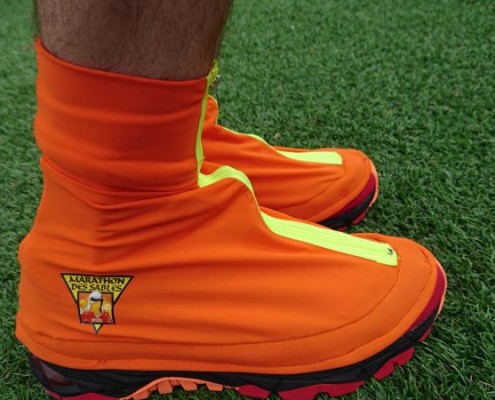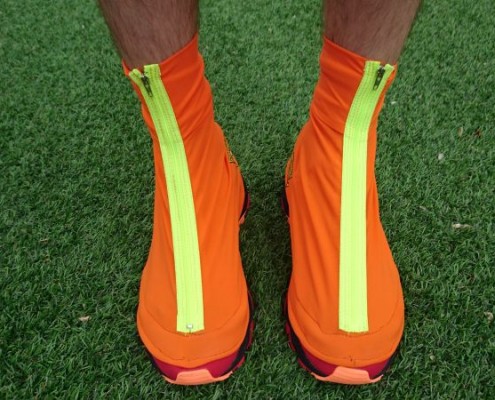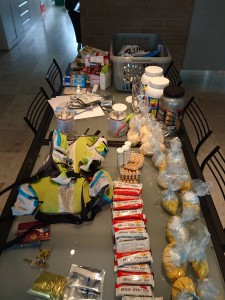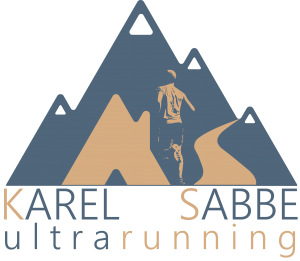The Marathon des Sables.
A legendary race that takes place in Morocco’s Southern Sahara.
The “Thoughest Footrace on Earth” as it is called. 257km. 6 stages. 40°C. Self-sufficiency. Loose sand.
Within a few days it’s D-day: I’m taking the plane to Morocco, to Ouarzazate, to the gateway of the Sahara.
How to prepare for such effort?
For the Marathon des Sables (MdS) there are 5 crucial elements:
- The heat.
- The sand.
- The backpack.
- The food.
- The multi-stage aspect.
As a Belgian it’s not easy to prepare for the heat. Every now and then I trained in a sauna, and most of the time I was running with many layers to heat up while running. All in all, I will be not so well-prepared for the heat, and I just have to cross my fingers not to get dehydrated or ill. The 2 most important aspects of running in extreme heat is: being super-fit and having enough water. The first thing I made sure was OK, the water is provided by the organisation and in general should be enough. Every 12km you get 1.5 liter of water, to which I’ll add sports drink powder to get in carbohydrates and salt. The organisation also provides salt tablets. They recommend 2 tablets per bottle but this should not be taken lightly! Too much salt can also give problems, for example if you’re a low-salt sweater. I didn’t take many salt tablets as I drank enough sports drink.
The second big element is the sand. Partly because it makes running a lot harder (especially with a backpack), partly because sand comes in your shoes, and you get blisters.

Gaiters stitched directly on my running shoes to prevent sand entering shoes.

Gaiters stitched directly on my running shoes to prevent sand entering shoes.
Blisters are the number one reason of stepping out of the MdS, so I wanted to be well-prepared. I went to an orthopedic shoemaker to get gaiter stitched to my running shoes. This way I hope not to get blisters. I also hope to arrive at the bivouac early and “air-dry” any upcoming blisters. Every now and then I went running at the Belgian coast to get used to running in loose sand.
The second big element is the sand. Partly because it makes running a lot harder (especially with a backpack), partly because sand comes in your shoes, and you get blisters. Blisters are the number one reason of stepping out of the MdS, so I wanted to be well-prepared. I went to an orthopedic shoemaker to get gaiter stitched to my running shoes. This way I hope not to get blisters. I also hope to arrive at the bivouac early and “air-dry” any upcoming blisters. Every now and then I went running at the Belgian coast to get used to running in loose sand.

To get enough calories in about 6kg and a 20liter backpack is a hard feat.
Then there’s the Backpack. The backpack has to be between 6.5 and 15kilos, elite runners going towards the 6.5kg. Mine will be about 7.5kg as I need a lot of calories to be able to keep on running, so a 6.5kg backpack was not possible. I did limit the things I take to just mandatory equipment and food. This means no cooking, no mattress to sleep on, no spare clothes. You’re best off choosing a backpack with two 750ml front bottles so that at the checkpoints you can quickly fill up your water supply and add powders for carbs. You’re best off training with a backpack from a couple of weeks before the start of the MdS, increasing the weight of the backpack to get used to running with a 7kg backpack. Because you’re so limited volume and weightwise, it’s a very big work to organise your:
Nutrition. To get enough calories in a 20 liter backpack for 6 stages of desert ultrarunning is a hard assignment. First you start with a very rough plan, then get advice left and right, add personal touches, review again and again. After a lot of measuring, calculating and editing you get a food plan, that in general is calorie-based and not very tasteful. My dinners were for people with swallowing problems, that could drink a meal with a straw. I cut open one of the provided 1.5 liter bottles, added some water, mixed in the powder and drank the whole mixture. My idea is that 51 weeks in the year I’m eating great, and this one week will be hard.
Last but not least is the Multi-stage aspect. You’re not running a marathon in the desert. You’re running a marathon, the day after another marathon, the day after another one, then a double marathon and you end up with another marathon. It makes the world of difference with a one-day event, for which you need to be super-lean and in top shape. For the MdS I did my very best to keep a healthy weight, eating just about anything I wanted, because you just need the reserves to be able to keep on running. Otherwise you’ll have a good first day, a less good second day and by the third day you feel powerless and weak.
These are the things I prepared for as good as possible. It is very likely that after finishing I’ll have to correct myself at many points, but I’ll let you people know afterwards!
For now: wish me luck, my starting number is 0361 and you can follow at www.marathondessables.com

Training at the Belgian coast (77km with a 6kg backpack)





